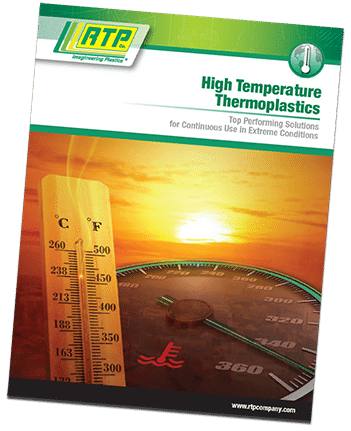Glass Reinforced High Temperature Compounds
Manufacturing techniques involving lead-bearing solders are under close scrutiny. Environmental concerns originating in Europe resulted in legislative directives calling for the elimination of certain substances deemed hazardous—including lead—from most electronic equipment starting July 2006.
The primary challenge in this transition is adapting to the higher temperatures that are required in the lead-free soldering process.
Impacted the most by this requirement are the thermoplastic materials in connectors and board level components such as capacitor housings and potentiometers.
High temperature thermoplastic technology has become a critical factor in product design. Components exposed to lead-free solder alloys must be capable of withstanding temperatures of 260 °C. Thermoplastic compounds that do not meet these requirements may melt or experience warpage.
Compatible Glass Reinforced Compounds
| Resin | Product Description |
HDT @ 264 psi |
Continuous Use Temperature |
Flammability V-0 @ 1/32 in |
|||
| °F | °C | °F | °C | Halogen | Halogen-free | ||
| PPS | 500 | 260 | 425 | 218 | No | Yes | |
| PEEK | 600 | 316 | 475 | 246 | No | Yes | |
| LCP | 530 | 277 | 450 | 232 | No | Yes | |
| LCP | 585 | 307 | 450 | 232 | No | Yes | |
| PPA | 500 | 260 | 375 | 191 | Yes | No | |
| HTN | 500 | 260 | 300 | 149 | Yes | No | |
High temperature compounds from RTP Company can be custom formulated to meet the requirements of individual applications and special manufacturing processes.
In additional to improved heat deflection temperatures and flammability protection, high temperature compounds can provide exceptional chemical, wear, and abrasion resistance. Also, they can employ various identification technologies, such as industrial coloring or microtaggants.





